Did you know that various locations in Coastal Mississippi hold significant importance in African American history? This Black History Month, we encourage you to honor the progress our society has made by visiting these sites. In this article, we will highlight exhibits and other notable places that reflect the origins of local African American movements. Continue reading to discover where your self-guided homage tour will begin.
Historical Sites | Historical Markers
Additionally, download our 2-Day Group Itinerary.
Biloxi Visitors Center & Lighthouse (Biloxi)
Explore the cultural influences of Biloxi at the historical exhibit, which features information about the Biloxi Wade-Ins that took place during the late 1950s and early 1960s. A historical marker located across the street near the Biloxi Lighthouse commemorates these events and honors the courage of local physician Dr. Gilbert Mason Sr., who led the peaceful wade-ins.
Biloxi Wade-Ins Mural (Biloxi)
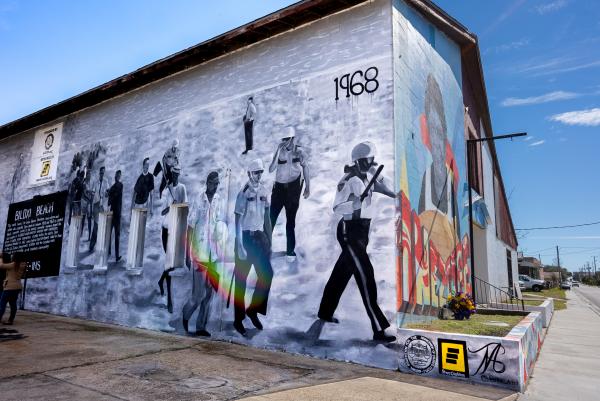
Another tribute honoring the courageous African Americans involved in the Biloxi Beach Wade-ins is located at the corner of Division St and Main St. This mural, unveiled on January 31, 2022, is a collaboration between community activists, the Biloxi NAACP, Steps Coalition, and artist Demetrius Gayden.
Pleasant Reed House (Biloxi)
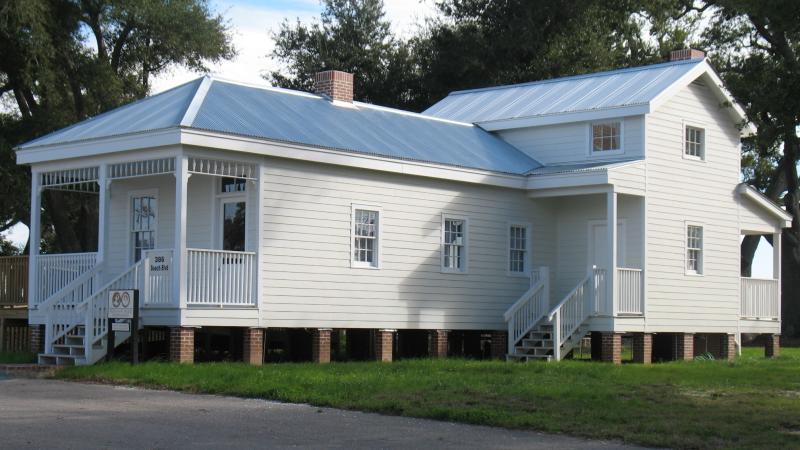
Discover the exhibit titled “City Within a City: African American Culture in Biloxi,” located at the Ohr-O’Keefe Museum of Art in the Pleasant Reed Interpretive Center. This exhibition highlights the cultural history of the vibrant yet segregated “city within a city” of Biloxi, Mississippi, during the post-WWII era.
Mississippi Aviation Heritage Museum (Gulfport)
Learn about John C. Robinson at the Mississippi Aviation Heritage Museum in Gulfport. Robinson, a pioneering Black aviator from Gulfport, went on to command the Ethiopian Air Force and subsequently returned to America to help establish what became known as the Tuskegee Airmen.
St. Rose de Lima Church (Bay St. Louis)
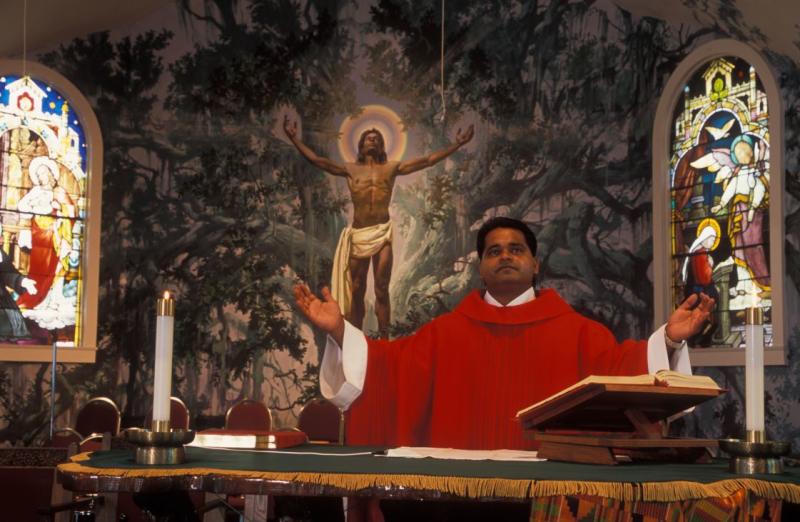
The history of St. Rose de Lima Church and its school is over a century old. In 1868, the first African American school in Bay St. Louis opened with an initial enrollment of 24 children. This two-story building was originally situated on Second Street and, on August 28, 1925, evolved into St. Rose de Lima Church. Today, it remains an active parish known for its exceptional Southern Gospel Choir. The church’s altar features a stunning mural of an African Christ figure against the backdrop of a live oak tree. Tours are available by appointment only; click here for more information.
100 Men Hall (Bay St. Louis)
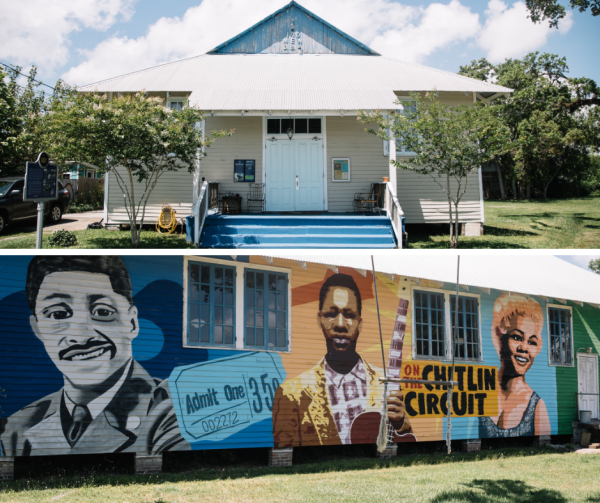
Located on the Mississippi Blues Trail, the 100 Men D.B.A. Hall has long been a hub for African American social life and entertainment. Built in 1922 by the One Hundred Members’ Debating Benevolent Association, the hall has hosted numerous events and performances. Locals remember iconic acts, including Etta James, Big Joe Turner, and Irma Thomas, among many others.
Martin Luther King Jr. Park (Bay St. Louis)
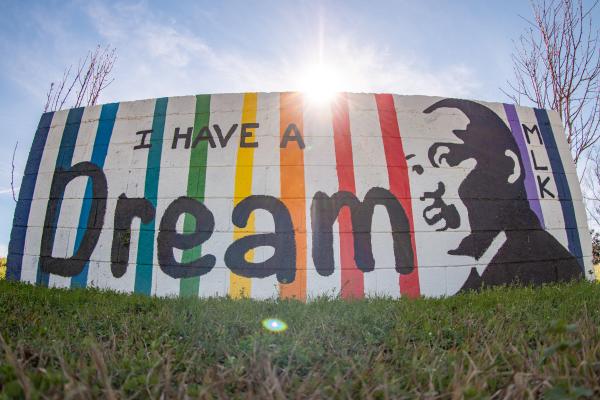
Bay St. Louis is also home to Martin Luther King Jr. Park. This public park, open during daylight hours, features beautiful murals created by local artists that spotlight civil rights icons such as Martin Luther King Jr. and John Lewis.
Phoenix Naval Stores (Gulfport)
9439 Creosote Rd, Gulfport, MS 39503

Once a major sap processing plant, Phoenix Naval Stores was predominantly staffed by African Americans from the Turkey Creek community during the early 1900s. This historically independent African American settlement was located north of Gulfport. Following a tragic accident that claimed the lives of 11 workers in 1943 and the subsequent closure in 1958, the building fell into disrepair.
In 2004, community activist Derrick Evans acquired the Phoenix Naval Co Office to prevent its demolition and preserve the culture of the Turkey Creek community. The site was listed as one of the 10 Most Endangered Places by the Mississippi Heritage Trust in 2015, resulting in extensive rehabilitation and research led by Bay St. Louis-based architecture firm, unabridged Architecture. Today, Phoenix Naval Stores serves as a community history center and archive, honoring Coastal Mississippi’s African American forest industry workers from Turkey Creek.
Make sure to visit the marker celebrating Dr. Felix Henry Dunn, a prominent physician who lived and practiced in Gulfport from 1953 until 2002. He served as president of the Gulfport Branch of the NAACP and marched alongside Dr. Martin Luther King Jr. A strong advocate for public housing and Head Start programs, Dr. Dunn was also the first African American member of the Harrison County Development Commission.
Consider visiting any or all of the eight Blues Trail markers scattered throughout Coastal Mississippi:
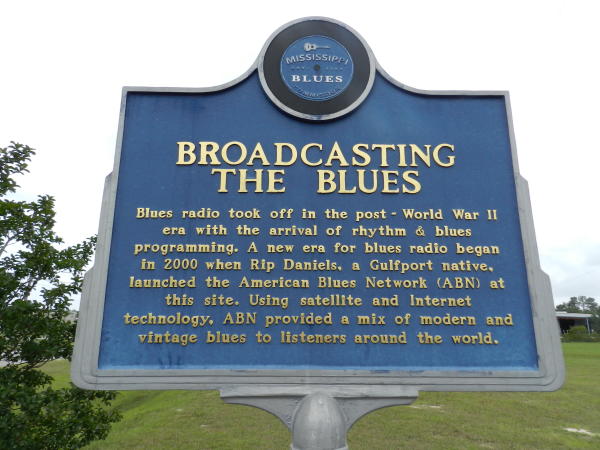
The Mississippi Blues Trail – Biloxi Blues – This historical marker celebrates the numerous clubs and cafés in Biloxi that vibrated with the sounds of blues, jazz, and rhythm & blues.
Mississippi Blues Trail – Blues & Jazz – The histories of blues and jazz are often traced along separate paths, but especially along the Gulf Coast, these two genres have been interwoven from their earliest days. Blues music played a key role in the works of Pass Christian’s notable native, Captain John Handy (1900-1971), as well as many locals who performed traditional jazz or rhythm & blues. The community has celebrated its rich African American musical heritage through various festivals, including “Jazz in the Pass,” first held in 1999.
The Mississippi Blues Trail – Blues Hall – The 100 Men D.B.A. Hall, a longtime center of African American social life and entertainment, was built in 1922 by the One Hundred Members’ Debating Benevolent Association. Throughout the years, the association sponsored numerous events and rented the hall to promoters showcasing blues, rhythm & blues, and jazz acts. Many locals fondly recall performances here by artists such as Etta James, Big Joe Turner, Guitar Slim, and Irma Thomas. Regular events are held at the Hall all year round – check out the calendar for upcoming activities!
The Mississippi Blues Trail – Broadcasting the Blues – When radio veteran and blues promoter Stan “Rip” Daniels launched WJZD radio in Gulfport on March 20, 1994, it became the first African American-owned FM station on the Mississippi Gulf Coast. According to the 2007 Broadcasting & Cable Yearbook, Mississippi had more stations (thirteen) regularly broadcasting under a blues format than any other state. Specialized blues programs are also aired across various college, public, rock, oldies, and urban contemporary stations. On October 1, 2000, Daniels further advanced the blues concept by launching the American Blues Network from WJZD. The ABN secured affiliations with many stations nationwide and broadcast its programs on the internet. Daniels’s concert promotions played a crucial role in supporting blues and southern soul performers along the Gulf Coast’s “chitlin’ circuit.”
The Mississippi Blues Trail – Gulfport Boogie – Gulfport once thrived with a vibrant rhythm & blues scene, especially in North Gulfport. Prominent figures from the area include Jaimoe, the renowned drummer of the Allman Brothers Band, and Lamar Williams, the band’s former bassist. Both musicians performed in numerous local clubs during their rise. Blues Hall of Fame pianist Roosevelt Sykes also called Gulfport home, along with other notable artists like pianist Cozy Corley, singer Albennie Jones, and guitarist Blind Roosevelt Graves.
The Mississippi Blues Trail – Moss Point Blues – Moss Point has been an influential center of African American music since as far back as 1898. Many residents from Moss Point became nationally influential musicians, including O.J. “Boss” Tatum, Lamar “Buck” Tatum, Elijah “Prof” Tatum, Romie Nelson, and others who attended Magnolia High School.
The Mississippi Gulf Coast Blues & Heritage Festival is also part of the Mississippi Blues Trail. Founded in 1991, this festival has featured notable southern soul, blues, zydeco, and gospel performances, welcoming headliners from the Mississippi blues and soul scene like Bobby Rush, Theodis Ealey, O.B. Buchana, and Nathaniel Kimble.
The Mississippi Blues Trail – Ocean Springs Blues – Ocean Springs is the birthplace of several notable African American musicians, including Johnnie Lee Johnson, known as Jaimoe, a founding member of the Allman Brothers Band. In 1995, Jaimoe and the other founding members of the Allman Brothers were inducted into the Rock and Roll Hall of Fame. In 2017, he received the Lifetime Achievement Award in the Arts from Mississippi. Other notable figures from Ocean Springs include accomplished guitarist and bandleader Henry Donahue, pianist Tempy Smith, and her exceptionally talented children who were well-known on the coast in the 1920s and later in New York City.



